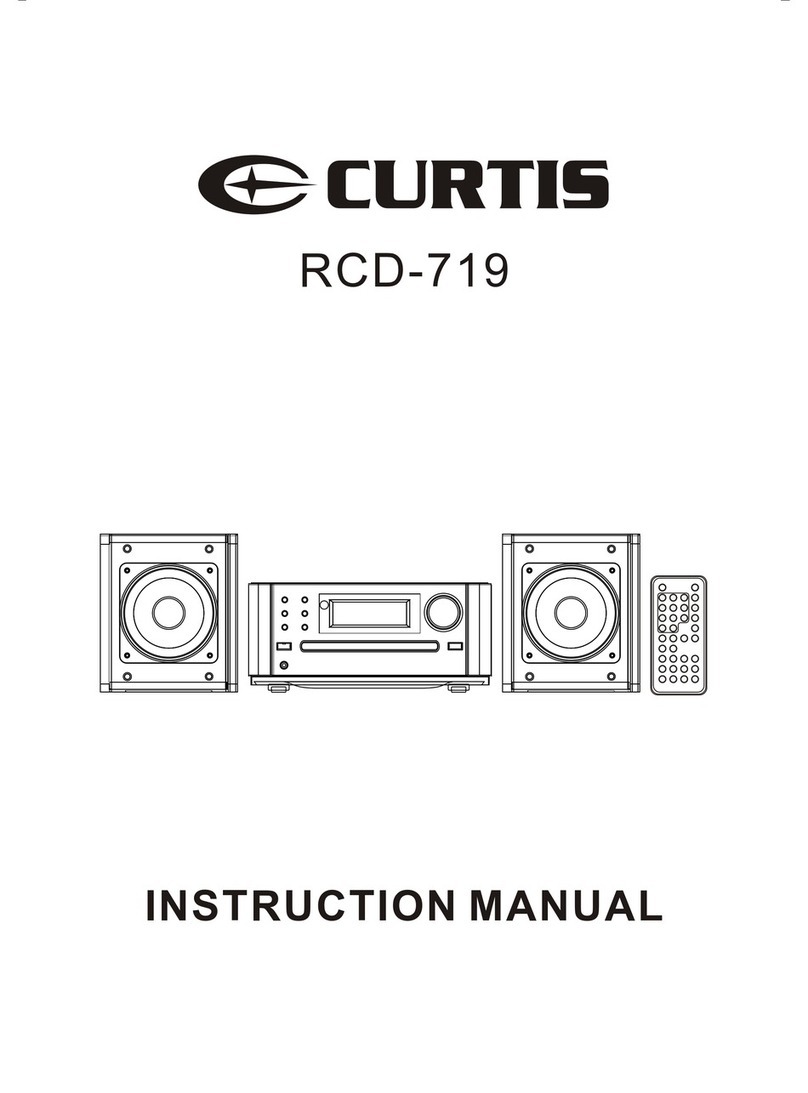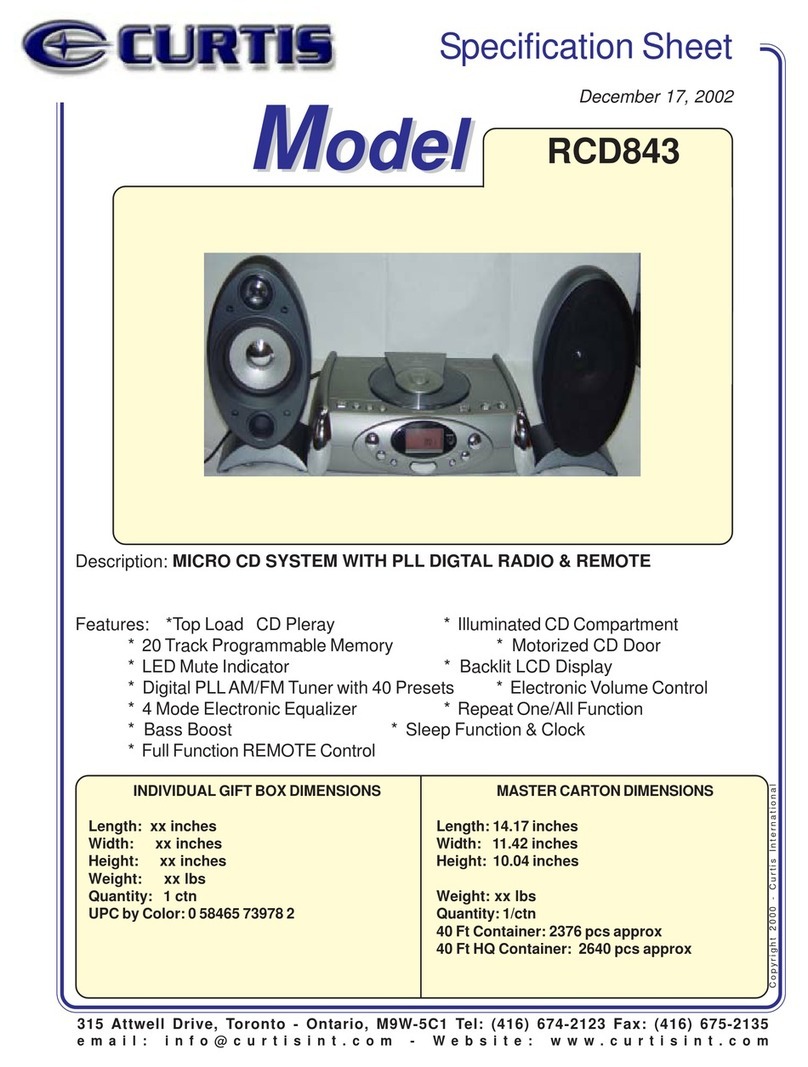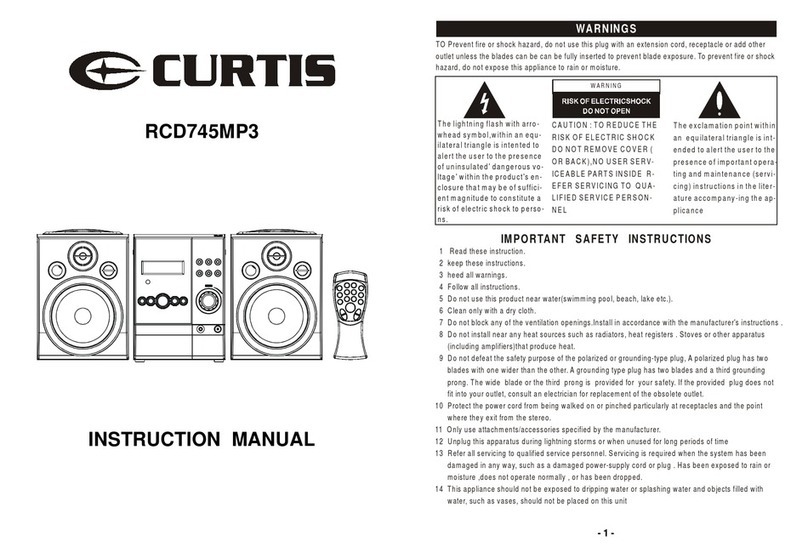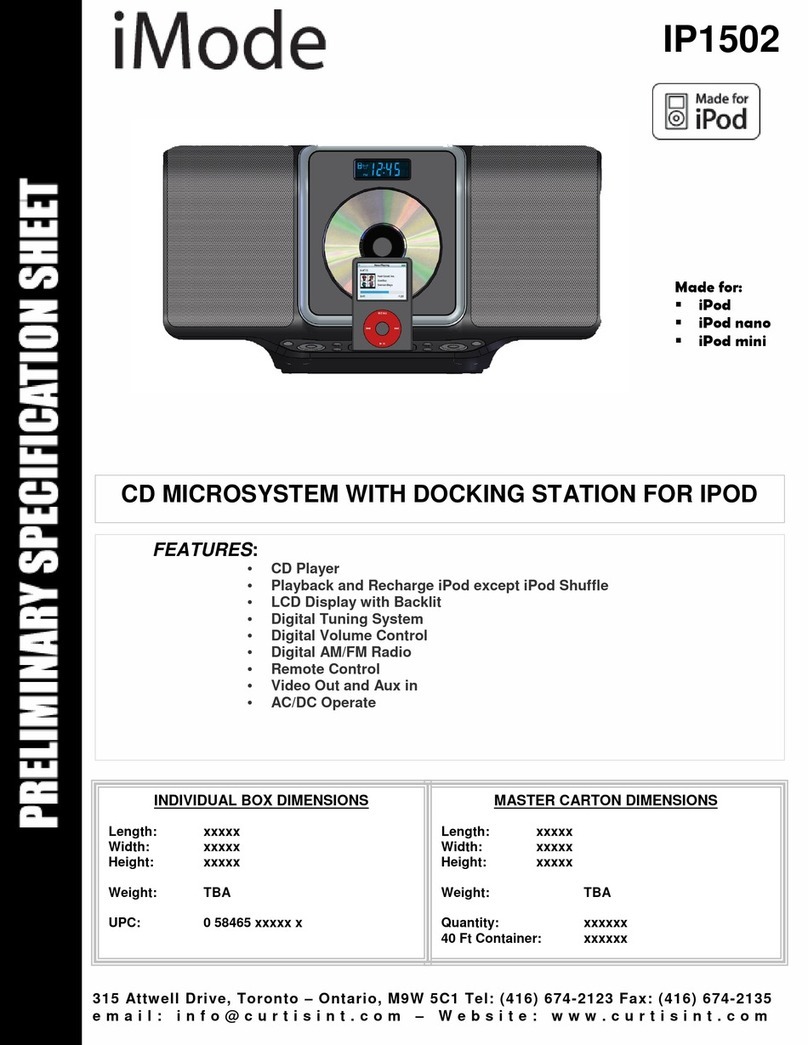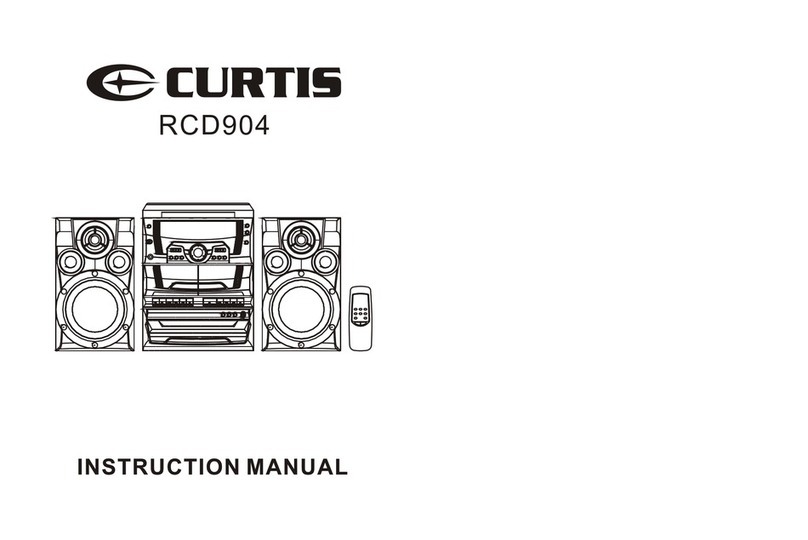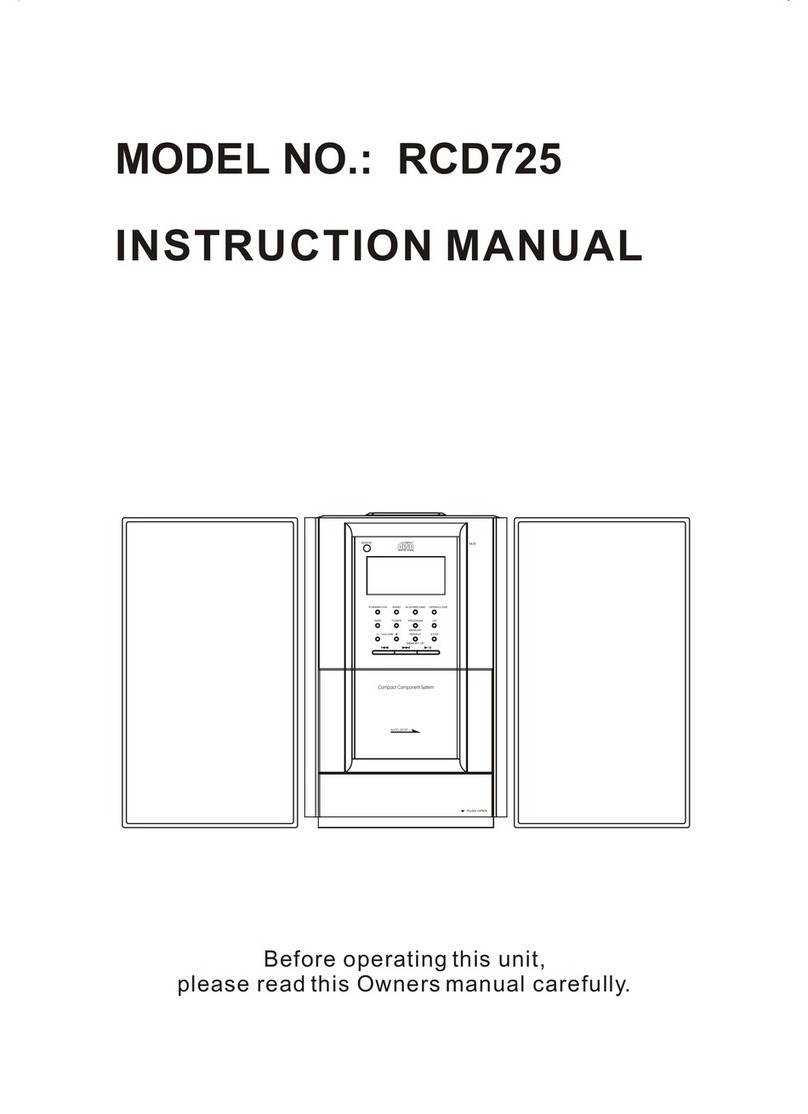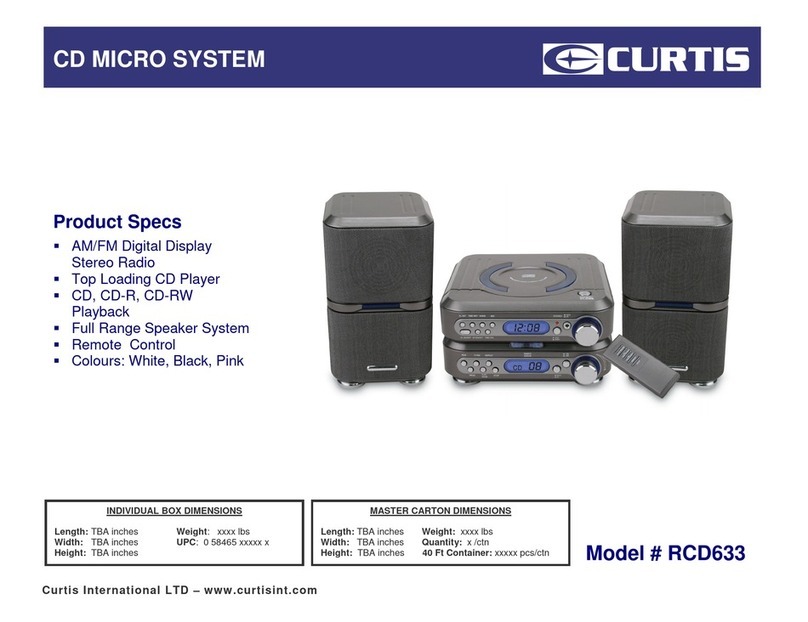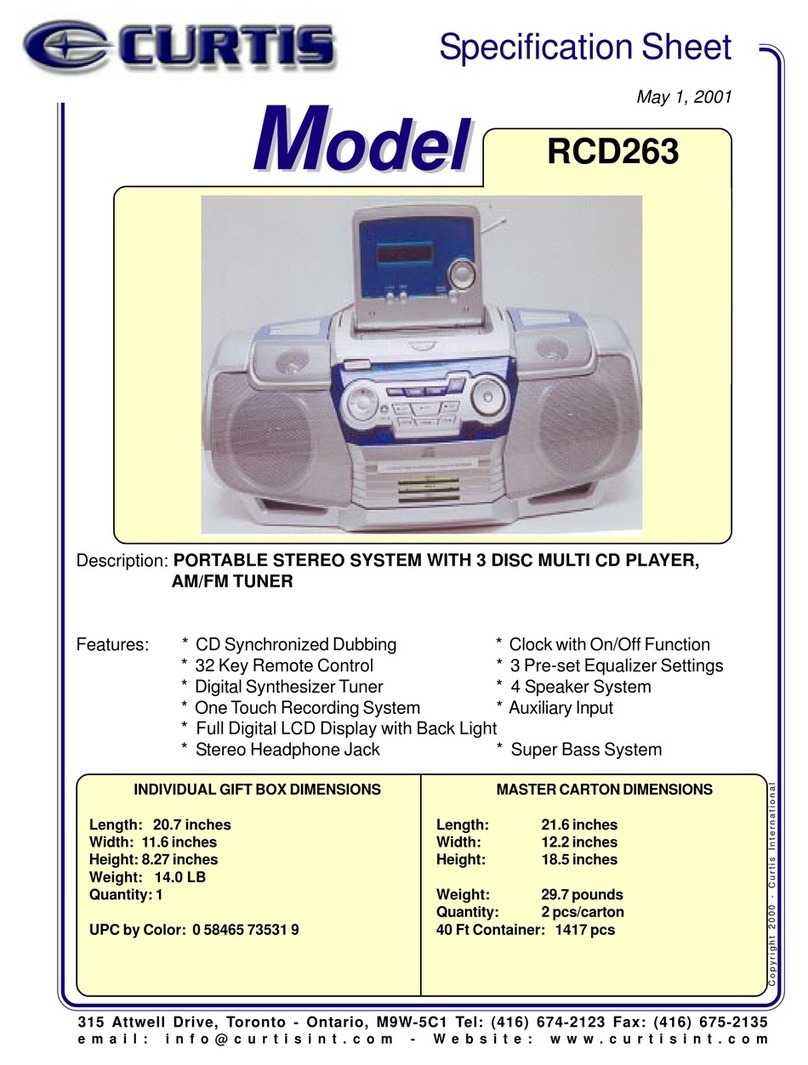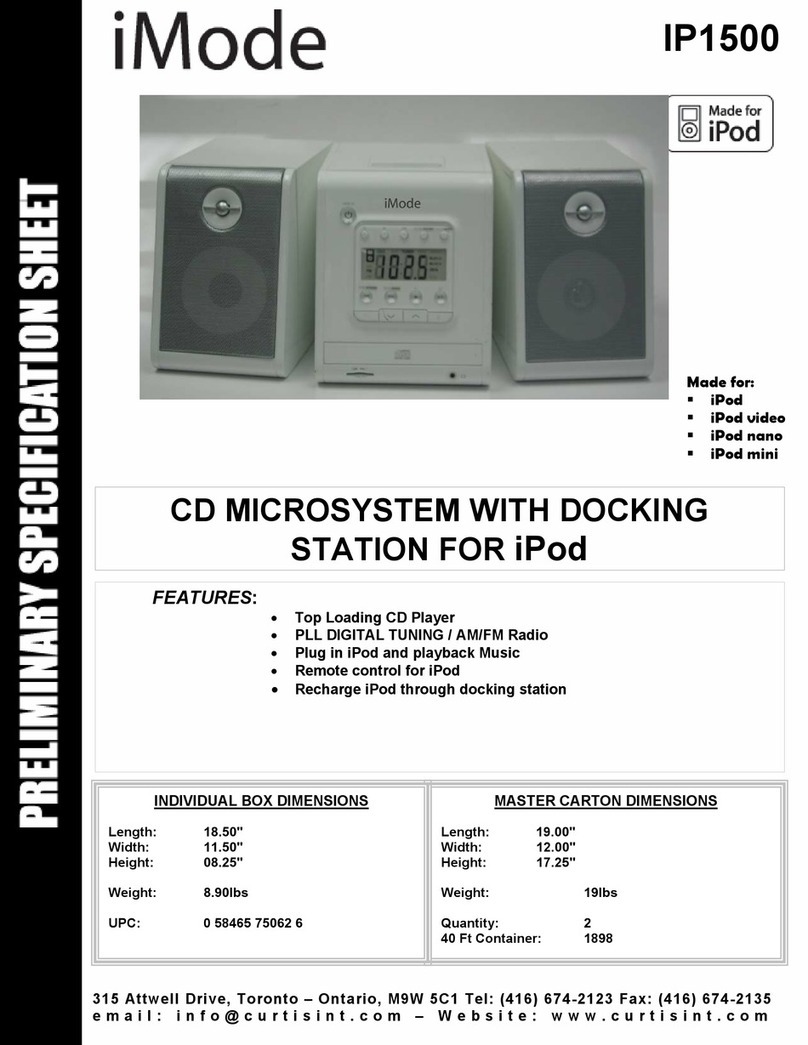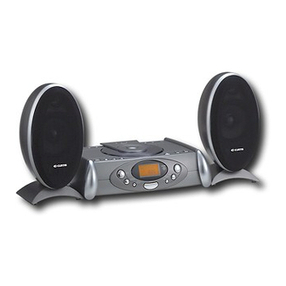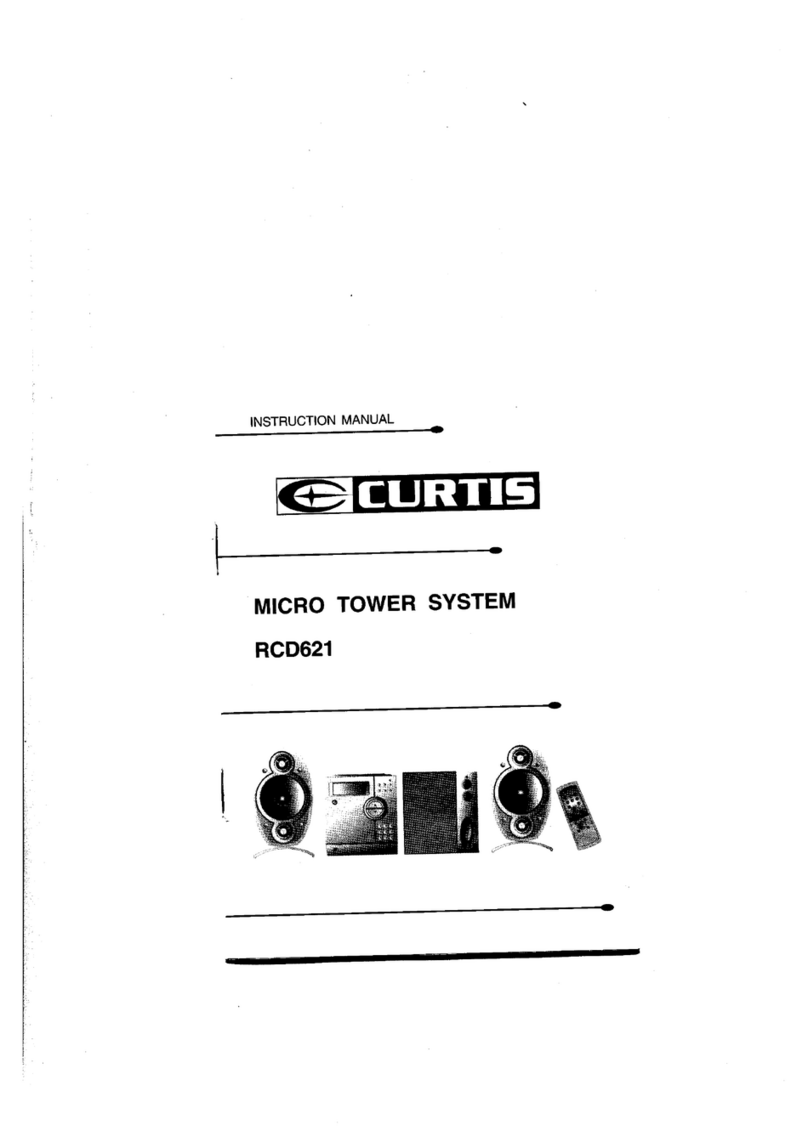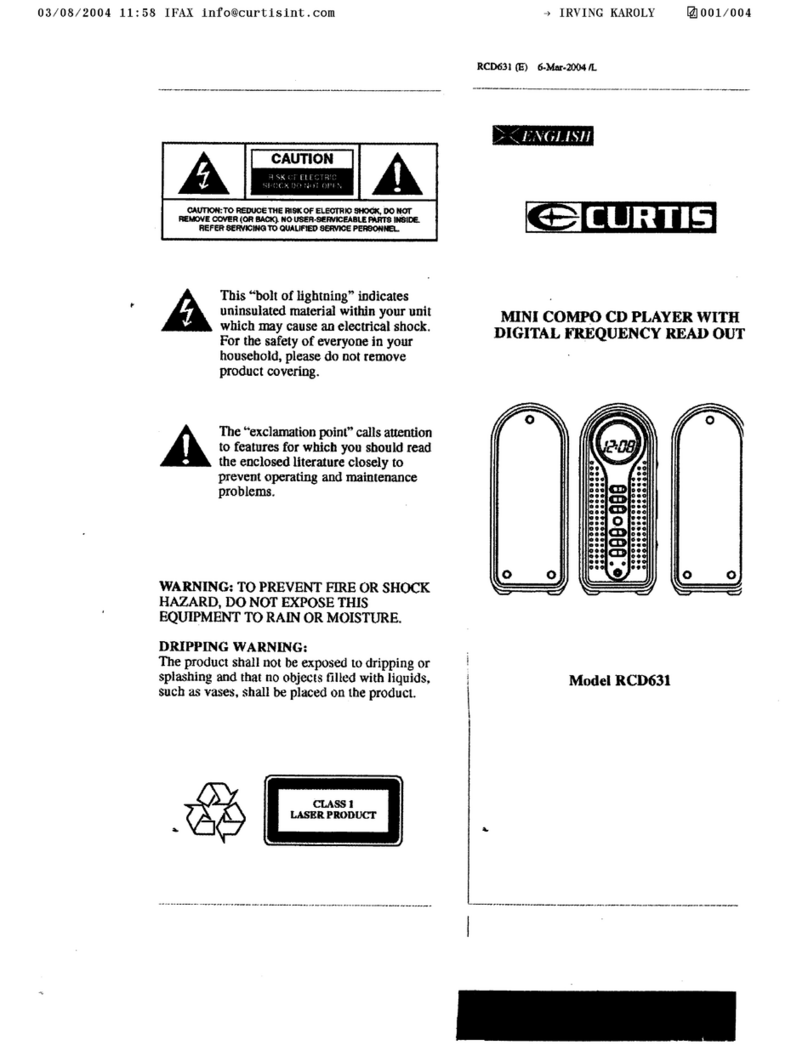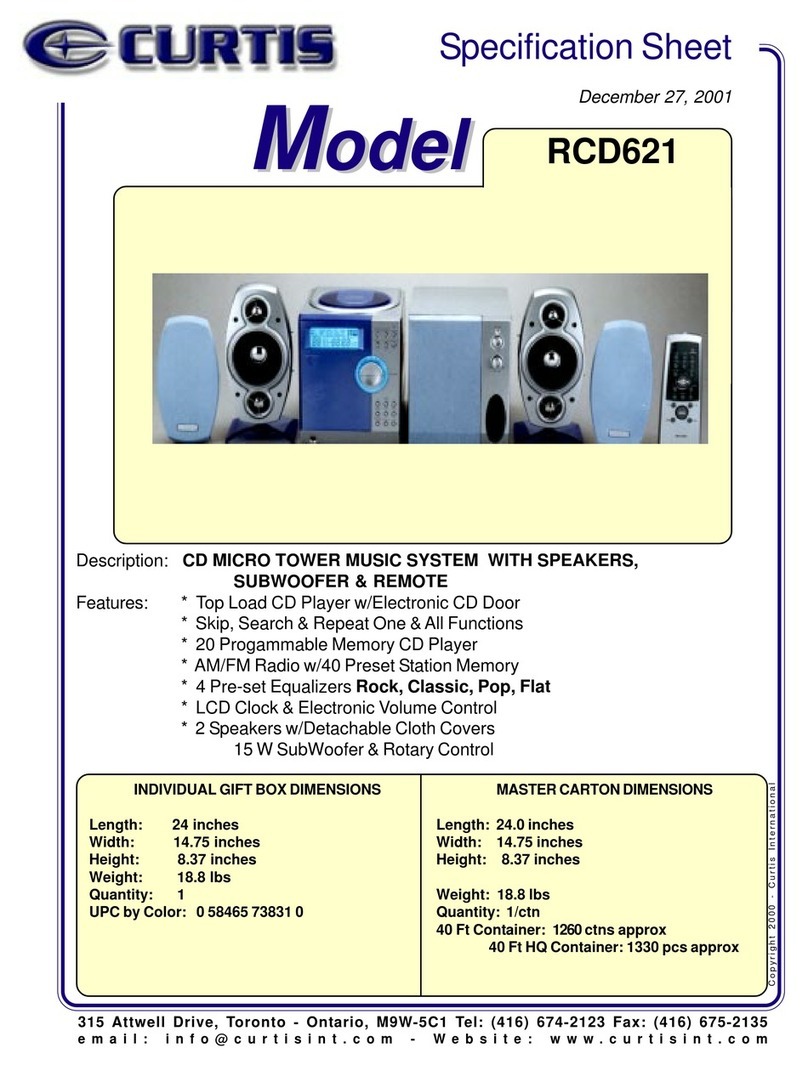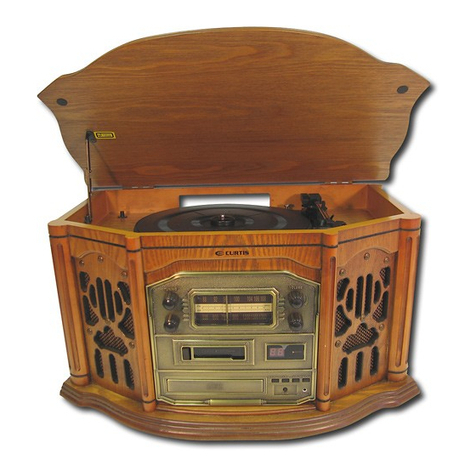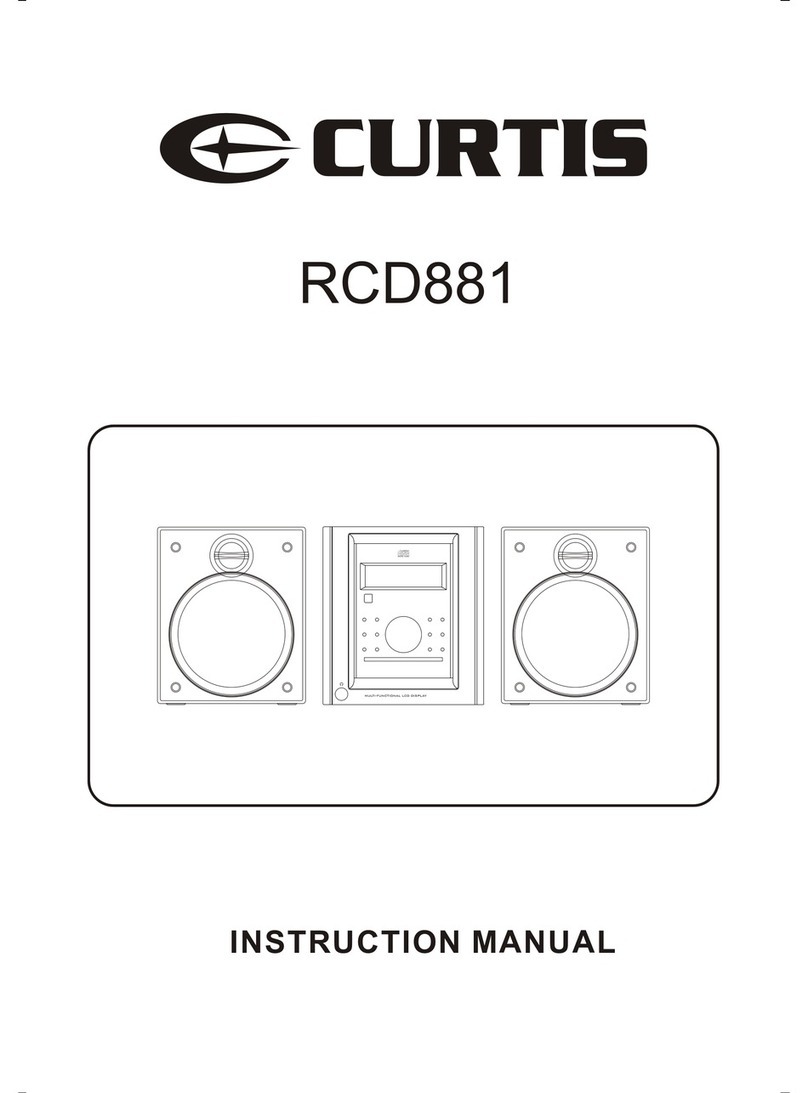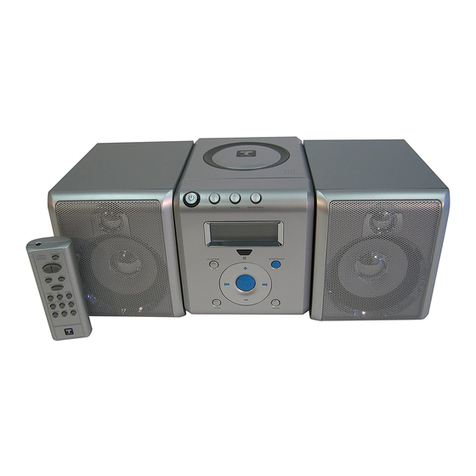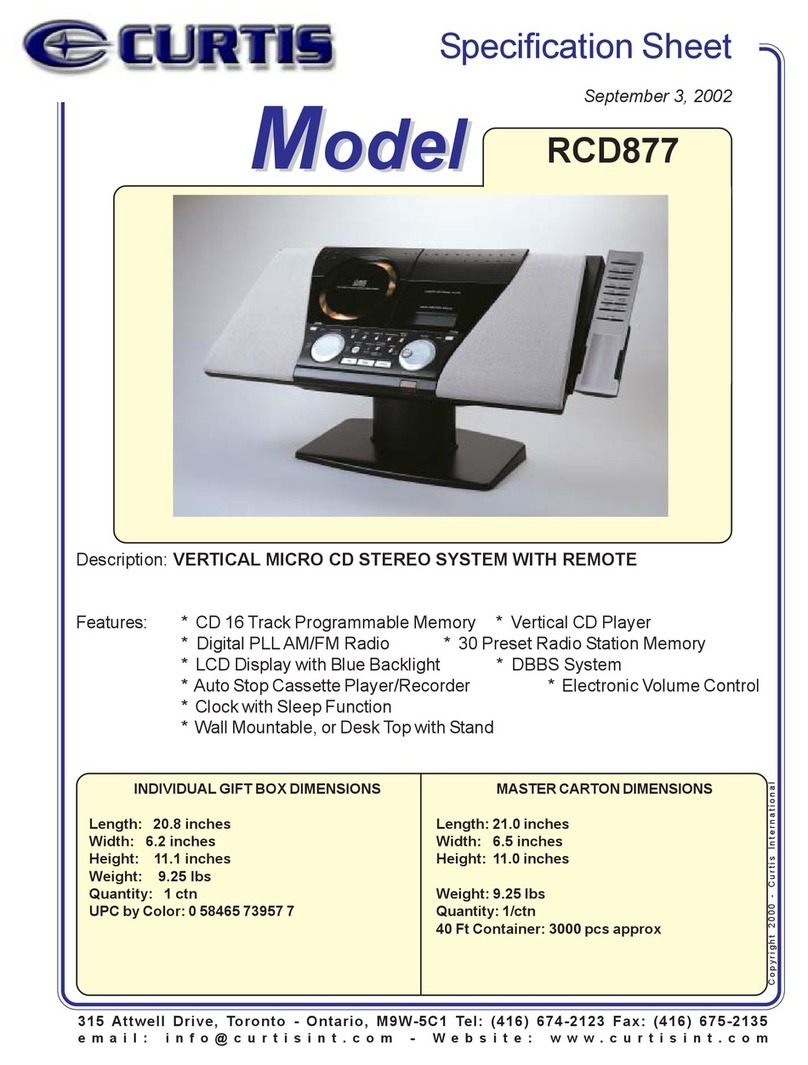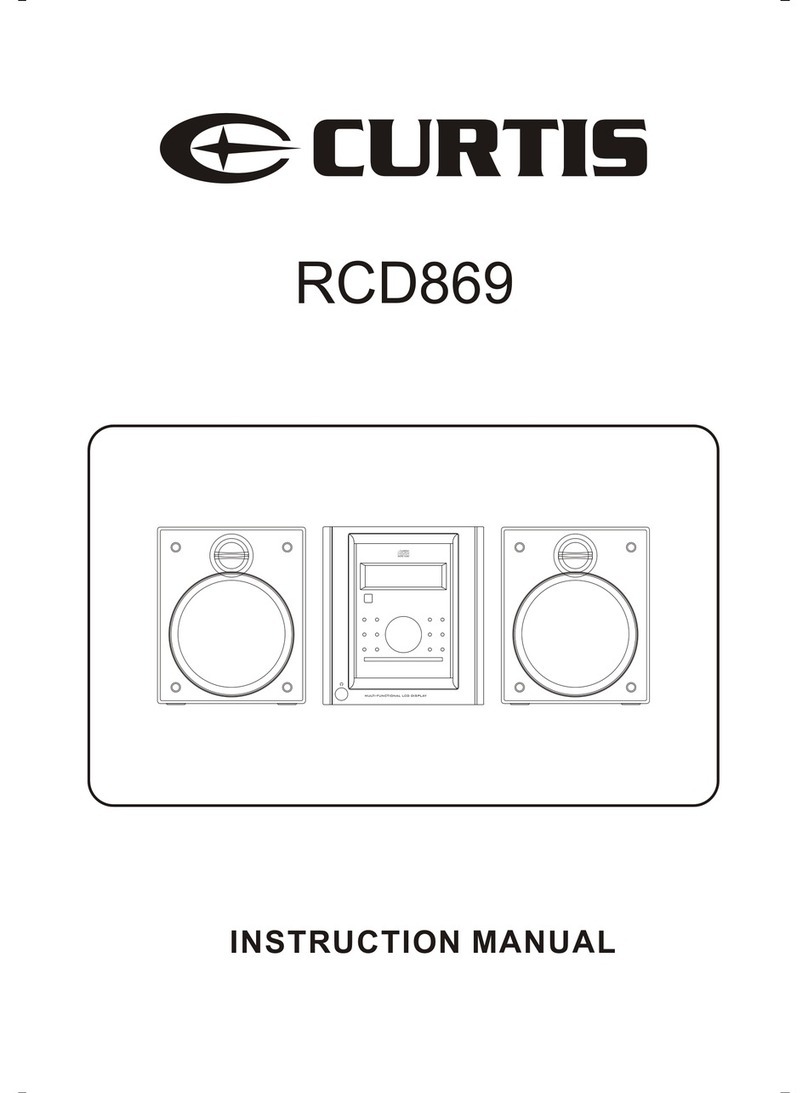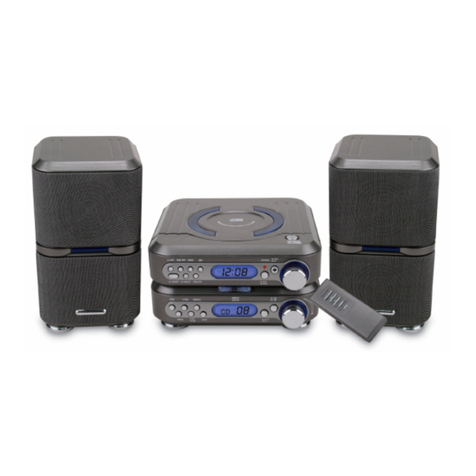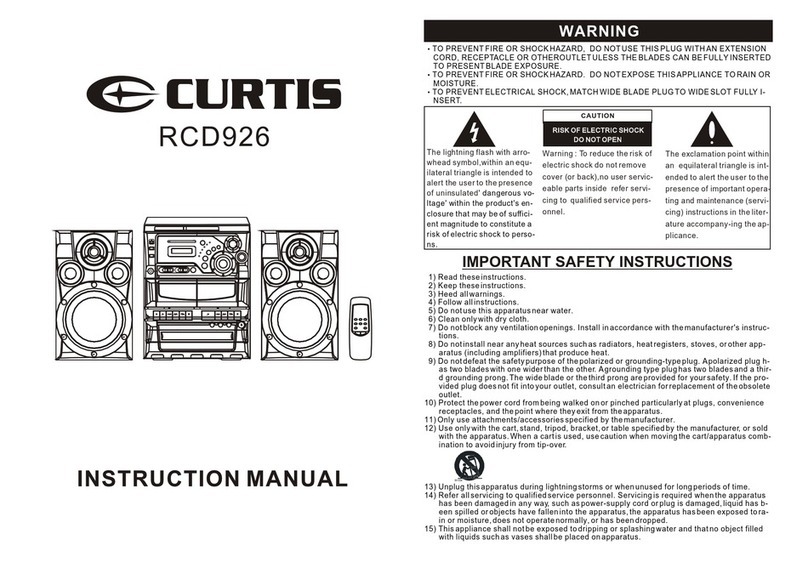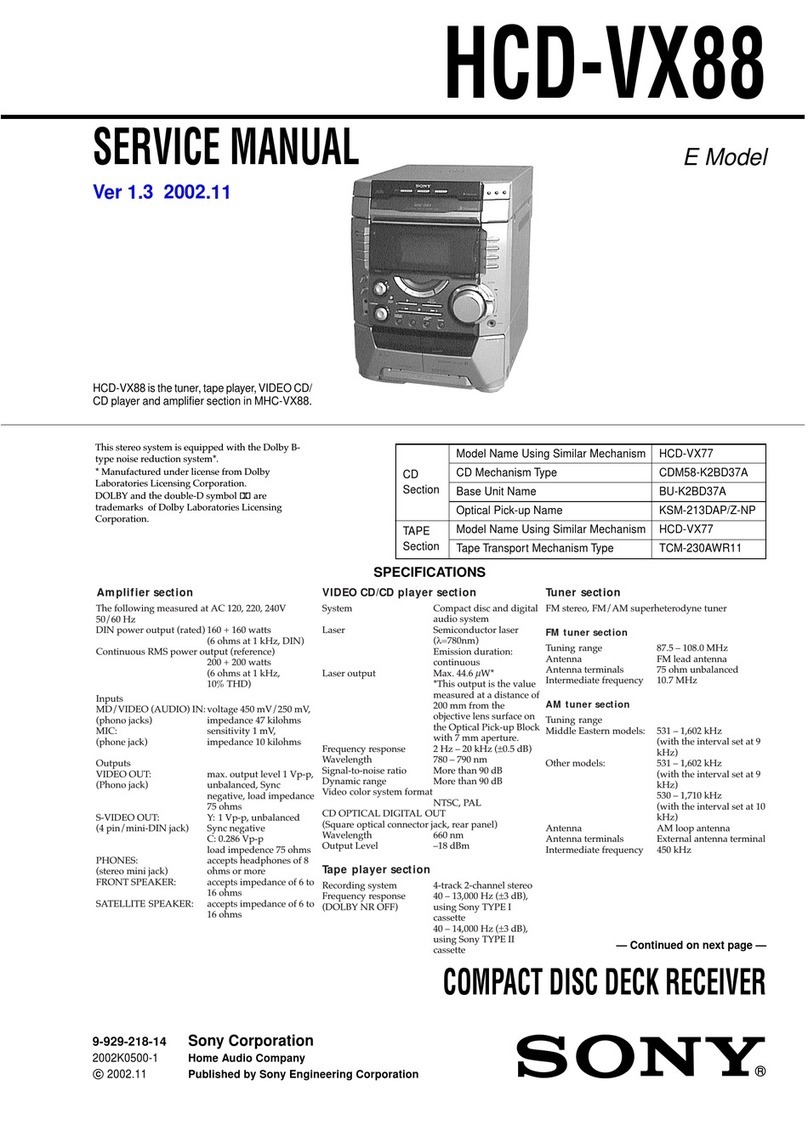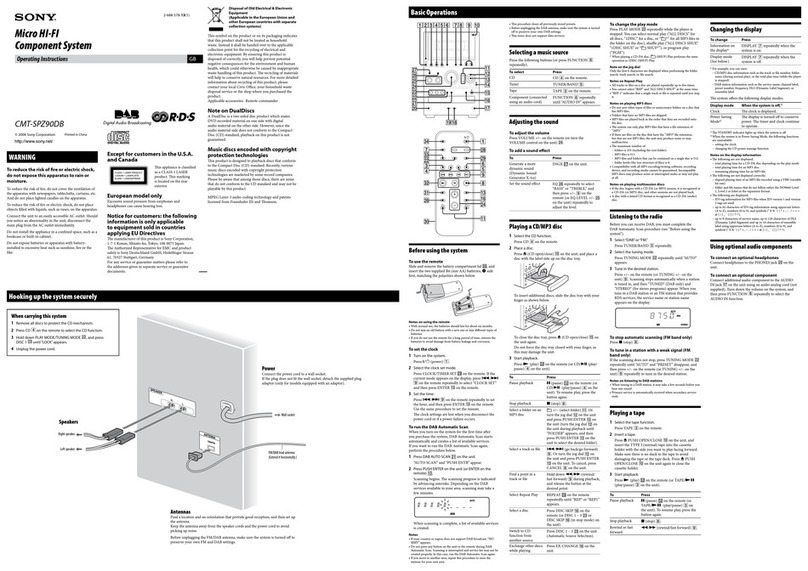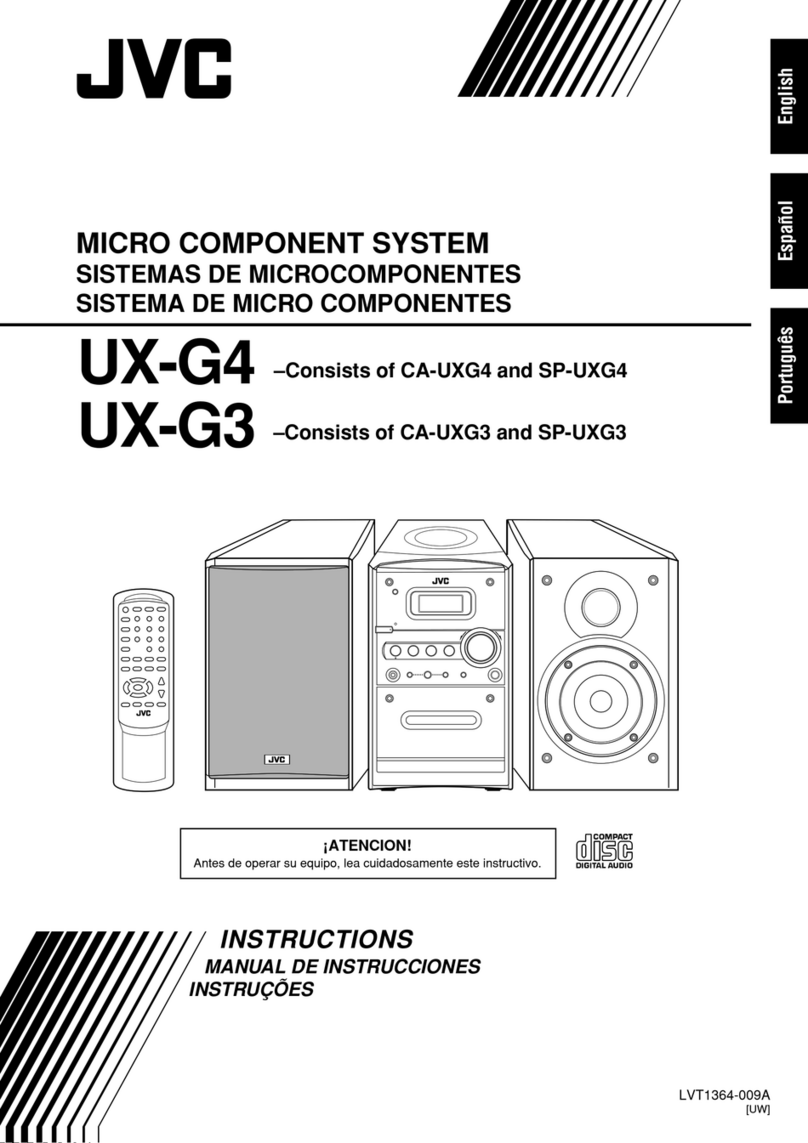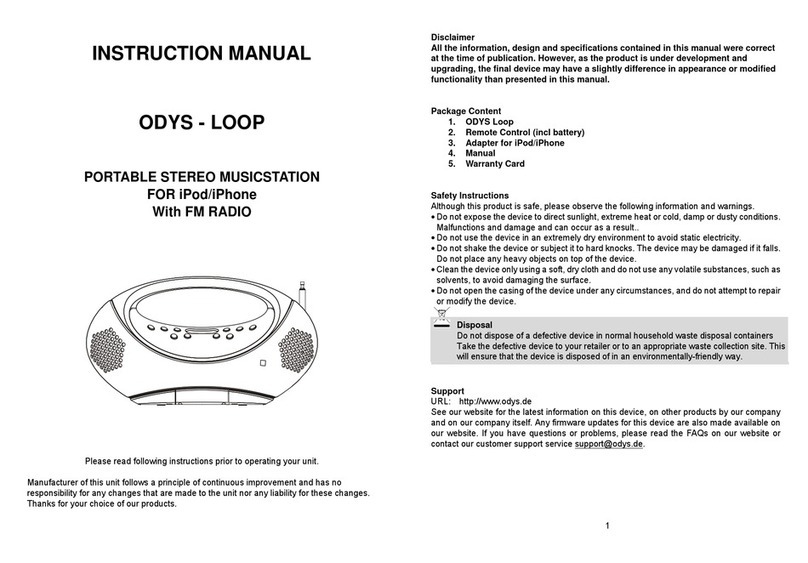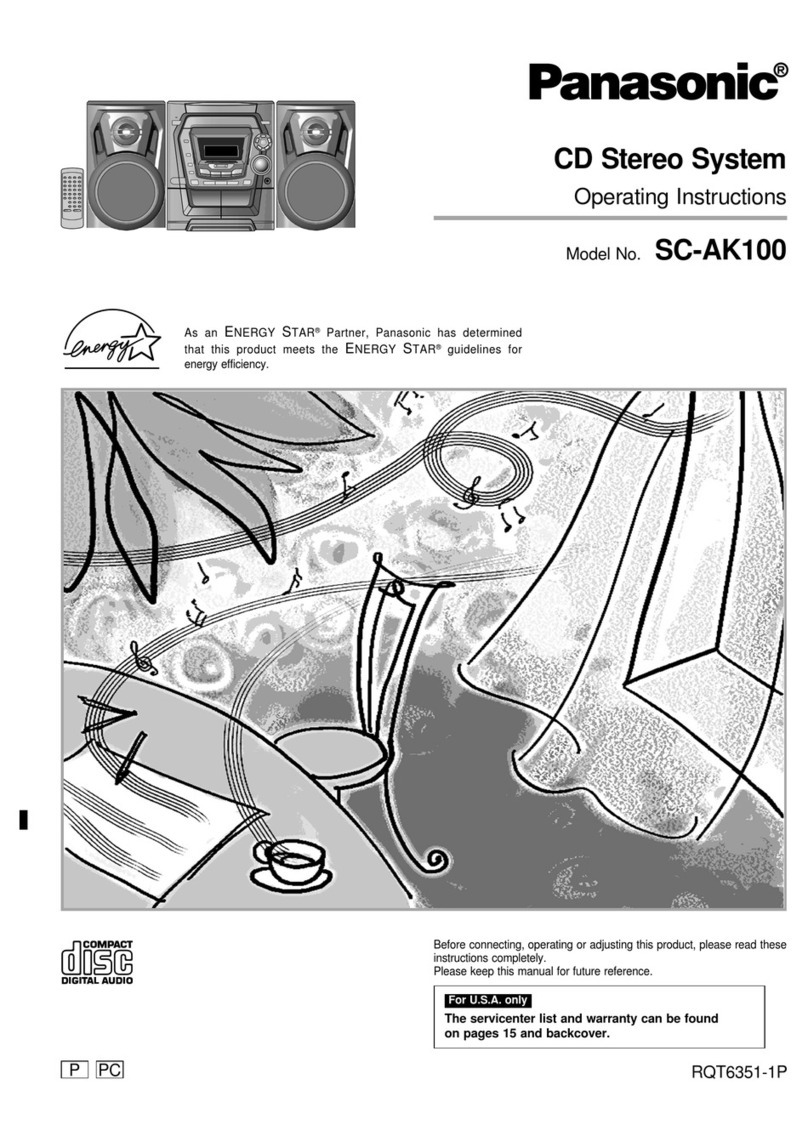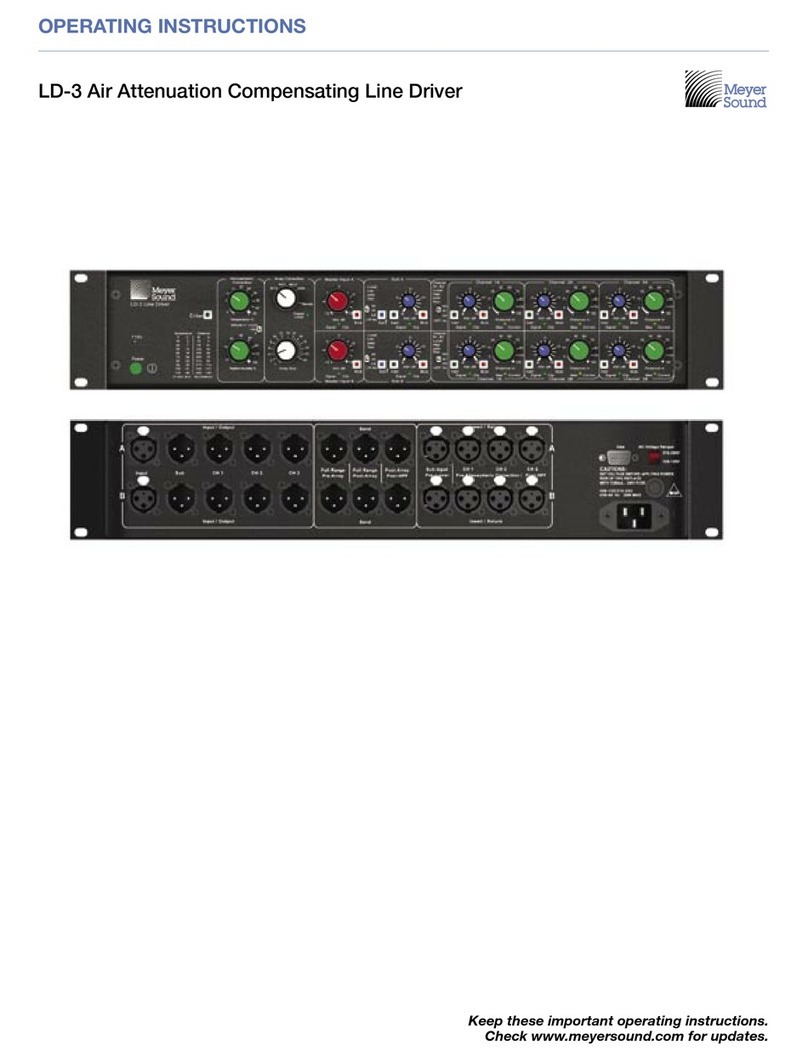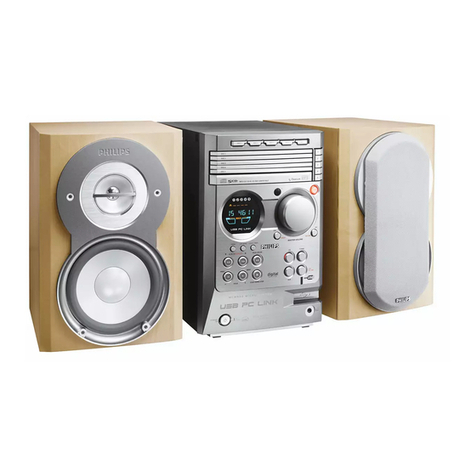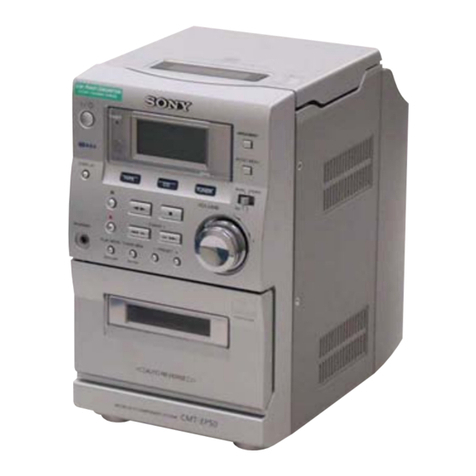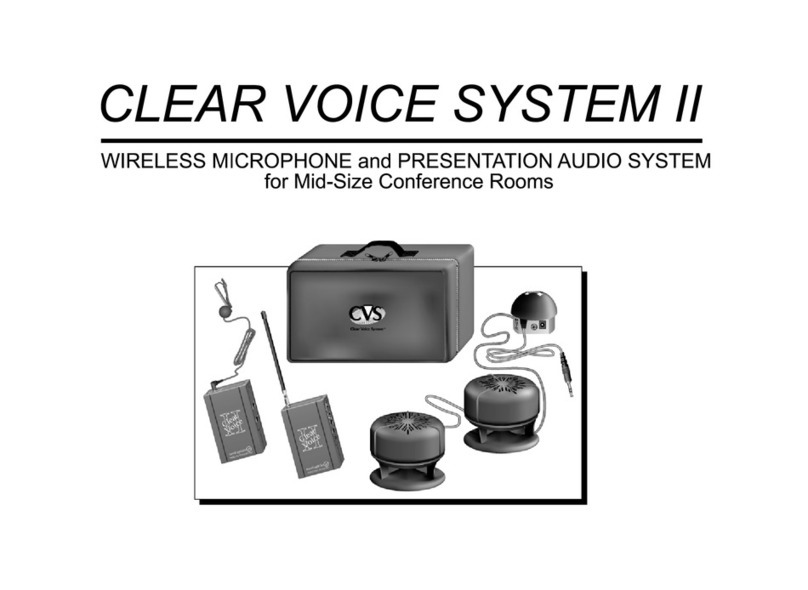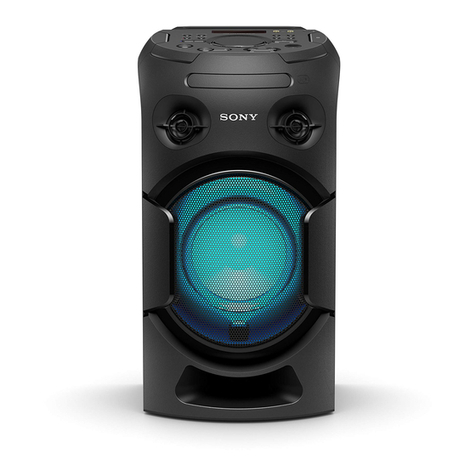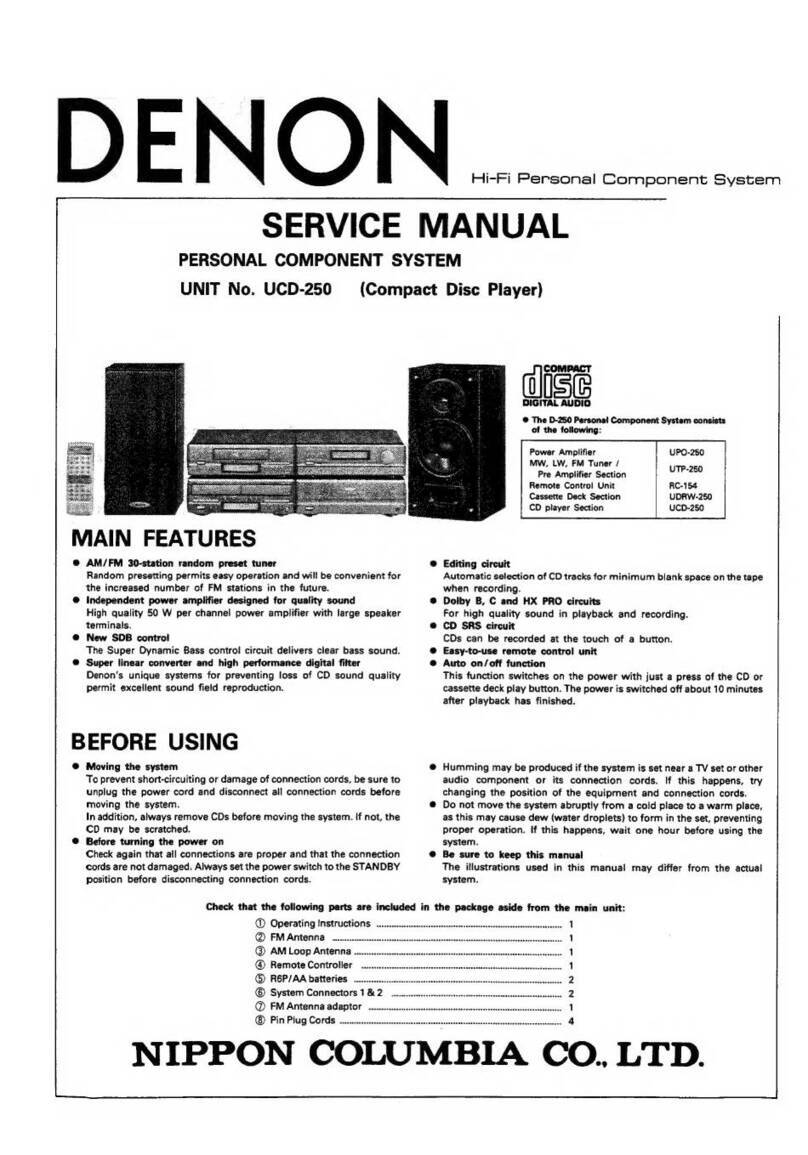Troubleshooting guide
Problem Cause Solution
Power does not come on when the
power switch is pressed
No sound comes out of the speakers
The sound is noisy
The cassette deck door can not be
closed
The tape does not move
No sound from tape
Can not record
When recording over a previously
recorded tape, the original signal can
still be heard
The sound is distorted or faint
Can not listen to any station, or signal
appears weak
The sound is distorted
Play stop immediately after starting to
play the CD, or play pauses or stops
during play
No sound
Specific CD is noisy, or playback stops
or skips
Unit is unplugged
The volume is turned down(to MIN)
The input selector does not match the
playback source
The unit is too close to a TV set or
another similar appliance
The cassette tape is not inserted
properly
The cassette tape is not inserted
properly
The tape heads are dirty
The write-protect tabs on the
cassette have been broken off
The tape heads are dirty
you are trying to record on metal
(type IV) tape
The tape heads are dirty
You are trying to record on metal(type
IV) tape
The tape heads are dirty
The station is not tuned in properly
A TV set is being used nearby
The antenna is not oriented properly
The CD is inserted upside down
The CD is dusty or dirty, or there is
condensation on the CD
The CD player is paused
The CD is scratched, damaged or
warped
The disc is very dirty
Connect the unit to the AC power
supply
Adjust the volume
Re-select the input source
Turn off the TV or other appliance,
and relocate the unit
Insert the cassette tape correctly
Insert the cassette tape correctly
Clean the tape heads
Tape over the holes with
cellophane tape
Clean the tape heads
Use a normal (type I) tape
Clean the tape heads
Use a normal(type I) tape
Clean the tape heads
Tune in the station correctly
Turn off the TV set
Re-orient the antenna until
reception improves
Insert the CD with the printed side
upper most
Clean and dry the CD
press the PLAY/PAUSE button
The CD should be changed
Clean the CD
CD Player Tuner unit Tape deck The whole unitCD Player Tuner unit Tape deck The whole unit
14 15
In case of trouble with the unit, please look through this chart and see if you can solve the
problem by yourseif before callingyour dealer.
Specification
AMPLIFIER section
Output Power......................................2.0W + 2.0W (U.S.A. / Canada)
Frequency Response...........................60 to30,000Hz
TUNER section
FM Section
Frequency Range ...............................88to 108 MHz
AM Section
Frequency Range................................530 to1710 KHz (U.S.A./ Canada)
CD PLAYER section
Frequency response............................60 to20,000 Hz +/-4dB
Signal-to-Noise Ratio.......................... 55dB(IEC-A)
CASSETTE DECK section
Track System.....................................4 track, 2 channel stereo
Tapespeed ........................................4.8cm/sec
Wow and Flutter..................................0.4%(WRMS)
Frequency Response..........................125 to6,300Hz +/-6dB
RECORD PLAYER section
Motor ................................................DC servo motor
Drive System......................................Belt Drive
Speed ...............................................33-1/3rpm, 45rpm and 78rpm
Wow & Flutter.....................................less than 0.25%(WTD)
S/N Ratio .......................................... More than 50dB
Catridge Type.....................................Ceramic Stereo Catridge
Stylus................................................402-M208-165
Output Level ......................................160~ 380mV(5cm/sec at1kHz)
SPEAKER SYSTEM section
Type..................................................3 -ways
Impedance ........................................4 ohms for Tweeter speaker
6 ohms forSuper Bass speaker
8 ohms forStereo channel
Input Power........................................Max. 5W for 8 ohms speaker
Max. 10W for4 ohms speaker
Max. 25W for6 ohms speaker
GENERAL
Power Requirements...........................AC 120V~ 60 Hz(U.S.A. / Canada)
Power consumption............................19W
Dimension(W x Hx D ).........................520x 920 x340mm
Weight...............................................23.5kg
Standard Accessories.........................OperatingInstruction Booklet
Warranty Card
45 rpm Adaptor
